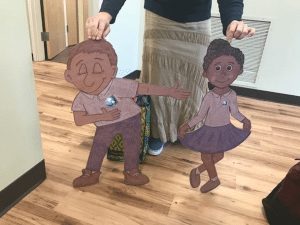Montessori for Infants
There is a major importance of Montessori for infants. Montessori philosophy plays an important role in infancy. Many people think of Montessori education as something that begins in preschool. Truthfully, Montessori principles begin at birth, with the parents as the first teachers.
If one could sum up Montessori education in a sentence, that sentence might say: Montessori provides the optimal environment in which to develop. In other words, the world around a child is set up so that he can do as much as possible on his own. Opportunities for him to reach the next developmental stage are accessible to him.
From the moment he is born, the child begins a progression through predictable developmental stages. It is during the first six years that the personality develops, beginning at the very start.
HOW MONTESSORI APPLIES DURING INFANTHOOD
Parents and infant caregivers applying the Montessori method need to provide opportunities for sustained attention. The trick is to create just the right balance of challenge and support. This is what creates the magic seen in Montessori classrooms. Children are fully engaged and wholly absorbed by their work. This is because they have just the right work.
The work of the infant consists of basic fine and gross motor skills. These skills serve as the building blocks for a limitless future. One task is to synchronize the movements of the eye and the hand. The other task is to slowly but surely gain control of the body. A newborn who cannot even lift her own head becomes a young toddler walking boldly and independently towards her desired destination.
COMMON MISTAKES THAT INTERFERE WITH DEVELOPMENT
Caregivers can best support infants in two important ways. First, to not interrupt a focused infant. Whenever possible, allow a baby space to engage with his environment. Resist the urge to jump in and engage with him while he concentrates.
Next, avoid using containment devices. This includes any device that straps a baby in or holds her in place. We want infants to be able to move on their own. We should never position them in such a way that they cannot get to by themselves. This denies them the natural process of developing the muscles correctly.
MONTESSORI FOR INFANTS: EARLY INFANCY (BIRTH TO THREE MONTHS)
Provide young infants with mobiles hung eight to ten inches from the eyes. Begin with simple black and white designs, as newborns are attracted to high contrast.
Tummy time is an essential part of a young infant’s awake time. This is particularly important as the safe sleep guidelines tell us to put our babies to sleep on their backs. A baby who sleeps on her stomach would naturally begin to pull up; however, the SIDS hazard is not worth the risk.
Place infants to sleep on their back, and let them spend time on their tummies while awake. Entice them to lift their heads by providing a horizontal mirror or high contrast images at eye level.
THREE TO SIX MONTHS
A three- to six-month-old’s primary work includes grasping objects and sitting independently. The activities they do during this span of time work towards these goals. They will generally master the Montessori for infants closer to the six-month mark.
Babies at this age will begin to reach towards a mobile that you hang just within their reach. They may be consumed with this activity, continuing to try even as they fail many times. Resist the urge to help, and let them master this on their own. It will be one of their first achievements, along with pulling up and rolling over.
SIX TO NINE MONTHS
A baby who can sit up independently begins to work on a variety of new skills. She may begin to pass objects from one hand to the other. She is also discovering cause and effect. At this stage, something special happens. For the first time, gross motor and cognitive processing merge. Baby decides to move to a location and tries to do so. This is how she learns to crawl or scoot.
Montessori for infants calls for providing mid-aged infants with rattles for passing hand to hand. Shaking them or banging them also helps with the discovery of cause and effect.
Entice babies to crawl by placing desired objects just out of their reach.
NINE TO TWELVE MONTHS
During the final months of the first year, babies’ primary work is pulling up, standing, and finally walking. This is a critical stage in Montessori for infants.
A pullup bar at baby’s level and a wagon to hold and push support baby’s intense focus on trying to walk.
BABIES ARE UNIQUE AND THE SAME
Every child will pass through the stages of development at their own pace withing Montessori for infants. It is very important for adults to remember what their role is and what it is not. We need to provide opportunities and accessibility to each new phase. The rest is up to the child. She WILL develop, and it is best for her to do so in her own time.
You may also like: Nanny vs. Preschool


